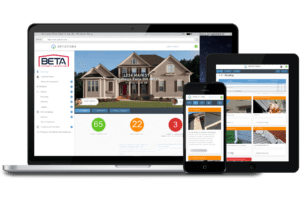General Home Inspections
This can include a pre-listing inspection, a home inspection for a real estate transaction, or an inspection of your current home for your own personal knowledge and comfort. These inspections typically include an overview of the home from the foundation to the roof. The state of Ohio requires home inspector to be licensed through Ohio Department of Commerce.
Radon Inspections
Radon should be tested by a licensed radon tester. The state of Ohio requires radon testers to be licensed through the Ohio Department of Health. A radon test is a 48 hour test that determines the levels of radon in the home. Radon is the 2nd leading cause of lung cancer deaths and is found in 1 in 15 homes in the state of Ohio. The only way to know if you have radon in your home is to test.
Wood Destroying Insect (WDI) Inspections
A WDI inspection assesses the property for signs of infestation by insects such as termites, beetles, and carpenter bees. Areas that are susceptible to wood damage, such as crawl spaces, basements, attics, and wood exteriors, looking for evidence like mud tubes, damaged wood, or insect activity. WDI inspectors are required to be license through Ohio Department of Agriculture.
Mold Inspections
During a mold inspection, a home inspector examines the property for signs of mold growth. Areas that are prone to moisture, like basements and bathrooms, are observed for visible mold, water damage, or musty odors. Inspectors may use a variety of tools to identify problem areas and recommend further testing and sampling if necessary.
Indoor Air Quality (IAQ) Sampling – Mold
During a mold indoor air quality sampling, a home inspector collects air samples to assess the concentration of mold spores in the indoor environment. This involves using specialized equipment to capture airborne particles. The samples are sent to a reputable lab to analyze and identify the types and quantities of mold present.

 The report is something you want to ask your home inspector about when you are doing your research for the right home inspector. You want any easy to follow report and a home inspector that is willing to explain any concerns even after the report is sent.
The report is something you want to ask your home inspector about when you are doing your research for the right home inspector. You want any easy to follow report and a home inspector that is willing to explain any concerns even after the report is sent.


